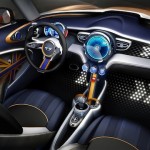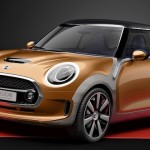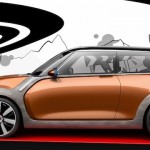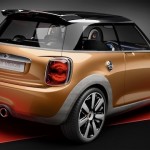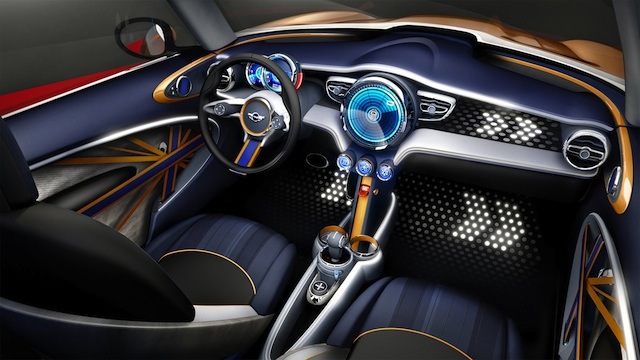
A 3D hologram of the next-generation Mini “gives more than a few hints where the new Mini is going,” says BMW Group design director Adrian Van Hooydonk.
Mini unveiled the digital model at its design centre in Munich, and although undisguised spy shots of the new model have been seen, the hologram shows off design details that will make it to production.
The most striking is the new grille which “reverts back to where we came from”, according to Mini design boss Anders Warming.
It’s a much simpler design, with an integrated bumper and fog lights reminiscent of the original Mini.
Short overhangs and the classic floating roof silhouette are maintained, but plastic cladding – referred to as ‘spats’ by the Mini designers – runs around the base of the windscreen and down to the wheelarches. “It’s something we like, but might not be exactly like that on the finished car,” said Van Hooydonk.
At the rear larger vertical tail-lights cut into the boot lid, with sharp lines sprouting out of them – a big contrast to the clean surfaces of the current car. A stepped rear spoiler and twin tailpipes hint at how the sportier models in the range will look.
Changes to the inside include more room, a 3D-type large central speedo, and a sport button that switches every display from blue to a go-faster red.
A production version of the new three-door hatchback will unveiled by Mini owner BMW at the Tokyo and Los Angeles motor shows in November.
The three-door will be followed by a flood of new Minis, including, for the first time, a five-door hatch, as well as a new Clubman, Convertible, Countryman, Paceman and even a Saloon to target booming markets like China.
The future of the Coupe and Roadster’s future is less certain. Both two-seaters haven’t sold well and could be replaced with a low-slung sports car.

